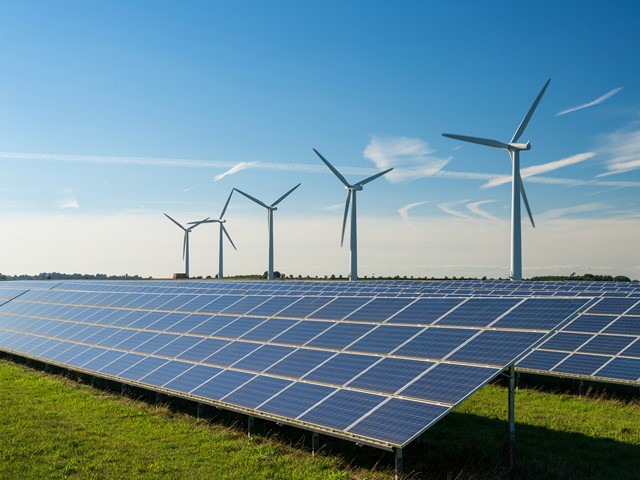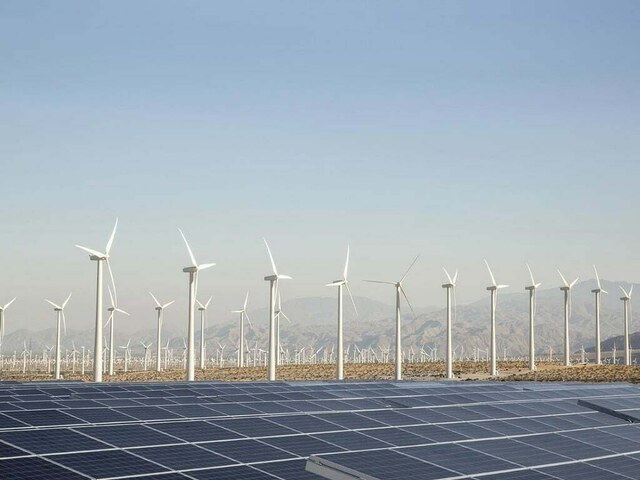Smart Grid Technology: Enhancing Efficiency

In an era defined by technological advancements and environmental concerns, the traditional electricity grid is undergoing a revolutionary transformation through the integration of smart grid technology. This innovative approach to electricity distribution holds the promise of enhanced efficiency, improved reliability, and a more sustainable energy future. In this blog post, we will explore how smart grid technology is reshaping the electricity distribution landscape and the remarkable benefits it brings to both consumers and the environment.
The Evolution of the Grid
The conventional electricity grid, designed decades ago, was built primarily for one-way power flow—from power plants to consumers. As the demand for electricity grew, so did the need for a more sophisticated and adaptable system. Enter the smart grid.
What is a Smart Grid?
A smart grid is a modernized electricity distribution network that employs advanced technologies, real-time data, and intelligent communication systems to optimize the generation, distribution, and consumption of electricity. Unlike the traditional grid, a smart grid enables bidirectional communication and power flow, allowing for more efficient energy management.
Key Components of a Smart Grid:
- Advanced Metering Infrastructure (AMI): Smart meters provide real-time data on energy consumption, enabling both consumers and utility companies to monitor usage patterns and make informed decisions.
- Distribution Automation: Automation technologies allow utilities to remotely monitor and control grid devices, minimizing outages and optimizing energy distribution.
- Renewable Energy Integration: Smart grids efficiently integrate renewable energy sources, such as solar and wind, by managing their intermittency and incorporating them into the grid.
- Demand Response: Utilities can communicate with consumers to adjust energy consumption during peak periods, reducing strain on the grid and promoting energy efficiency.
- Energy Storage: Integrated energy storage solutions help balance supply and demand, store excess energy, and release it when needed.
- Communication Infrastructure: A robust communication network facilitates real-time data exchange between various components of the smart grid.

Benefits of Smart Grid Technology:
1. Enhanced Reliability:
Smart grids enable real-time monitoring of the grid’s health, facilitating quick detection and response to disruptions. This minimizes downtime and improves overall grid reliability.
2. Improved Energy Efficiency:
Through data analytics and optimization algorithms, smart grids reduce energy wastage, transmission losses, and inefficiencies associated with the traditional grid.
3. Integration of Renewable Energy:
Renewable energy sources, such as solar and wind, are variable in nature. Smart grids effectively manage the fluctuations in their output, ensuring a stable power supply.
4. Consumer Empowerment:
Smart meters provide consumers with real-time insights into their energy consumption, enabling them to make informed choices and adopt energy-saving behaviors.
5. Reduced Environmental Impact:
By optimizing energy distribution and promoting renewable energy integration, smart grids contribute to lower carbon emissions and a more sustainable energy ecosystem.
6. Cost Savings:
Efficient energy management and demand response mechanisms lead to cost savings for both utilities and consumers, ultimately lowering energy bills.
Data Analytics and Intelligence:
At the core of the smart grid lies data and analytics. Advanced data analytics enable utilities to:
- Predict and prevent power outages by identifying potential issues in real-time.
- Monitor equipment health, enabling proactive maintenance and reducing downtime.
- Optimize energy distribution based on real-time consumption patterns.
The Future of Smart Grids:
The journey towards a smarter energy future is ongoing. As technology continues to advance, the potential of smart grids expands:
1. Microgrids:
Microgrids are smaller, localized versions of the larger grid. They can operate independently or in conjunction with the main grid, providing resilience during outages and promoting energy self-sufficiency.
2. Electric Vehicles (EVs) Integration:
The proliferation of electric vehicles presents an opportunity for smart grids to play a crucial role. EVs can act as energy storage devices and even feed energy back into the grid when needed.
3. Internet of Things (IoT) Integration:
The IoT can enhance the capabilities of smart grids by connecting various devices and sensors, allowing for real-time monitoring and control of energy usage.
4. Energy Trading and Peer-to-Peer Transactions:
Smart grids could enable consumers to trade energy with one another directly, creating a decentralized energy market and promoting energy autonomy.
Conclusion: A Smarter Energy Future
The transition to smart grid technology is a testament to human innovation and our commitment to a sustainable future. As we face challenges related to climate change and the efficient use of resources, the smart grid offers a solution that combines technology, data, and environmental responsibility in this info from Scoopearth.
Governments, utility companies, and consumers alike play essential roles in realizing the full potential of smart grids. By embracing this transformative technology, we are not only modernizing the electricity distribution system but also contributing to a greener, more efficient, and reliable energy landscape for generations to come.



